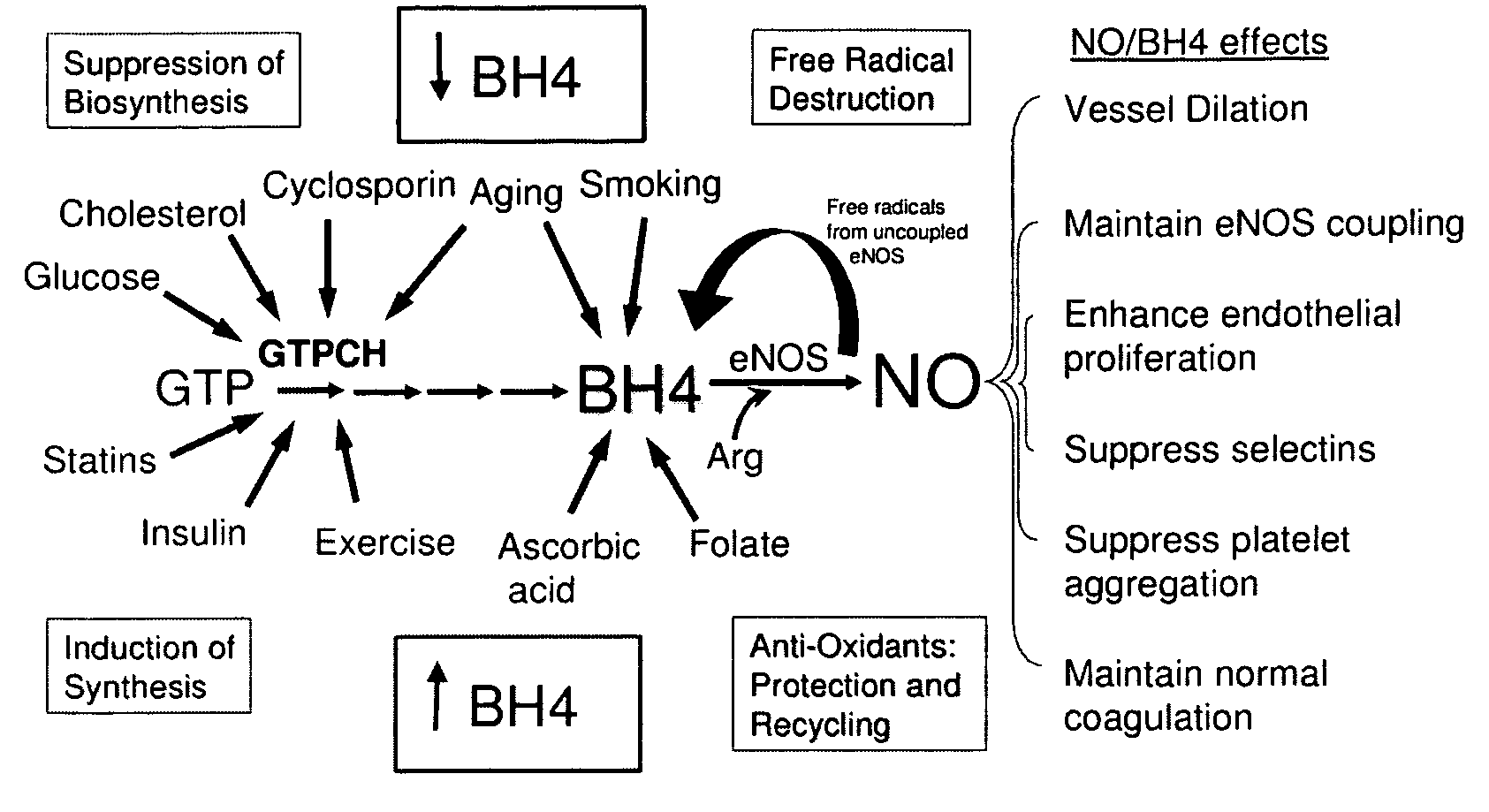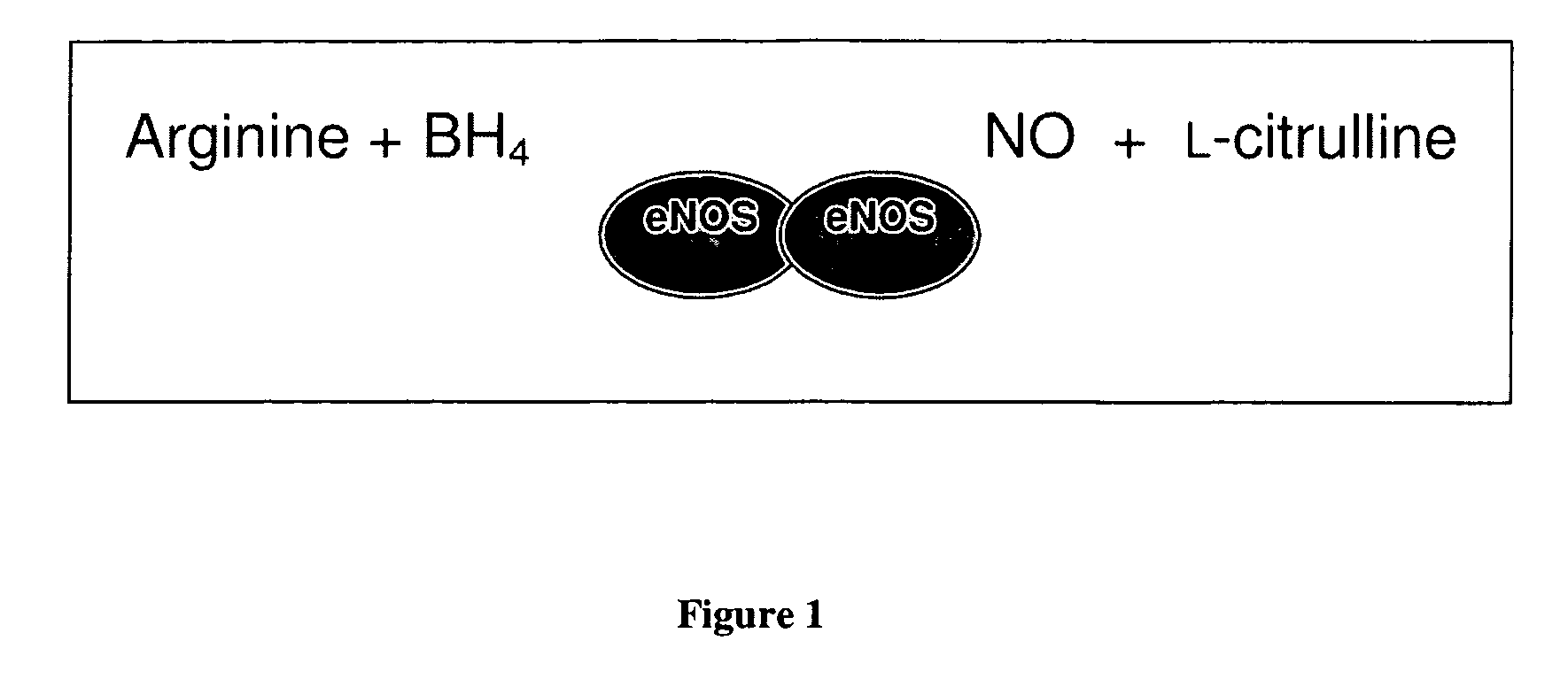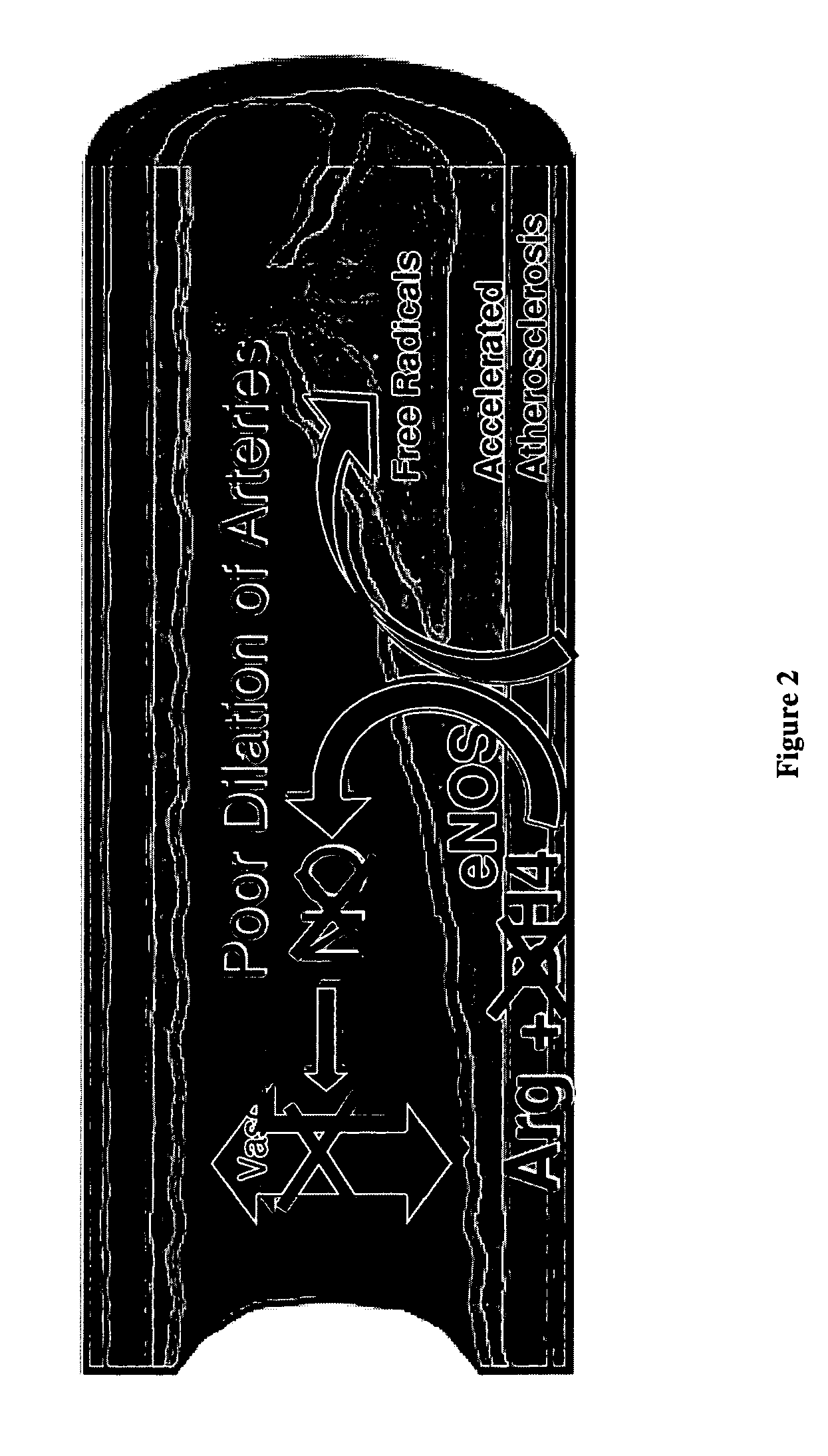Methods and compositions for the treatment of vascular disease
a technology for vascular disease and compositions, applied in drug compositions, extracellular fluid disorders, metabolic disorders, etc., can solve the problems of reducing the resulting effect, not beneficial or desirable, morbidity, etc., to improve insulin sensitivity, prevent the readsorption of bile acids, and reduce cholesterol.
- Summary
- Abstract
- Description
- Claims
- Application Information
AI Technical Summary
Benefits of technology
Problems solved by technology
Method used
Image
Examples
example 1
Clinical Evaluation With 6R-Tetrahydrobiopterin
[0232]The following example provides guidance on the parameters to be used for the clinical evaluation BH4 in the therapeutic methods of the present invention. As discussed herein throughout, BH4 will be used in the treatment of diabetes-related and non-diabetic cardiovascular complications, including but not limited to resistant hypertension, intermittent claudication, coronary hypertension, coronary artery function, pulmonary arterial hypertension, and hemolytic anemias including sickle cell disease. Clinical trials will be conducted which will provide an assessment of daily oral doses of BH4 for safety, pharmacokinetics, and initial response of both surrogate and defined clinical endpoints. The trial will be conducted for a minimum, but not necessarily limited to 1 week for each patient to assess efficacy in reversing the relevant study endpoints, e.g. development of pain during walking for intermittent claudication, and to collect s...
example 2
Clinical Evaluation With 6R-Tetrahydrobiopterin in Diabetics Establishment of Dose Effect, Dose Interval and Safety in Diabetics in Phase 1 / 2 or 2a
[0246]Prior to initiating any phase 2a dosing / efficacy studies, a short phase 1 / 2 dose escalation study will be conducted in a variety of diabetic populations to establish the dose effect on vascular compliance and safety should be considered. The first study will establish dose range and regimen and the range of vascular function endpoints that can be monitored to support clinical endpoints. Subjects of the first study will be diabetics with significant vascular disease (reduced microvascular compliance) and hypertension, and daily oral doses of BH4 from 0, 1, 2, 5, 10 and 20 mg / kg will be administered in a once daily or twice daily dosing regimen. The patients will be monitored for vascular compliance, perfusion / reperfusion / forearm blood flow and blood pressure over a week of treatment and within the span of a day once stabilized on a d...
example 3
Studies in Other Cardiovascular Indications Unrelated to Diabetes Pulmonary Vascular Disease
[0268]A Phase 1, Multicenter, Open-Label, Dose-Escalation Study to Evaluate the Safety and Efficacy of 6R-BH4 in Subjects with Pulmonary Arterial Hypertension
Objectives:
[0269]The primary objective of the study is to evaluate the safety of oral 6R-BH4, administered in escalating doses in addition to standard care, in subjects with pulmonary arterial hypertension (PAH).
[0270]The secondary objective of the study is to evaluate change in biochemical markers of endothelial dysfunction and nitric oxide synthetase activity (coupled and uncoupled) in subjects with PAH receiving escalating doses of oral 6R-BH4 in addition to standard care.
[0271]The tertiary objective of the study is to evaluate change in biomarkers of disease progression, 6-minute walk (6MW) distance, Borg dyspnea scores, and quality of life (QOL) measures in subjects with PAH receiving escalating doses of oral 6R-BH4 in addition to s...
PUM
| Property | Measurement | Unit |
|---|---|---|
| delay time | aaaaa | aaaaa |
| delay time | aaaaa | aaaaa |
| time | aaaaa | aaaaa |
Abstract
Description
Claims
Application Information
 Login to View More
Login to View More - R&D
- Intellectual Property
- Life Sciences
- Materials
- Tech Scout
- Unparalleled Data Quality
- Higher Quality Content
- 60% Fewer Hallucinations
Browse by: Latest US Patents, China's latest patents, Technical Efficacy Thesaurus, Application Domain, Technology Topic, Popular Technical Reports.
© 2025 PatSnap. All rights reserved.Legal|Privacy policy|Modern Slavery Act Transparency Statement|Sitemap|About US| Contact US: help@patsnap.com



